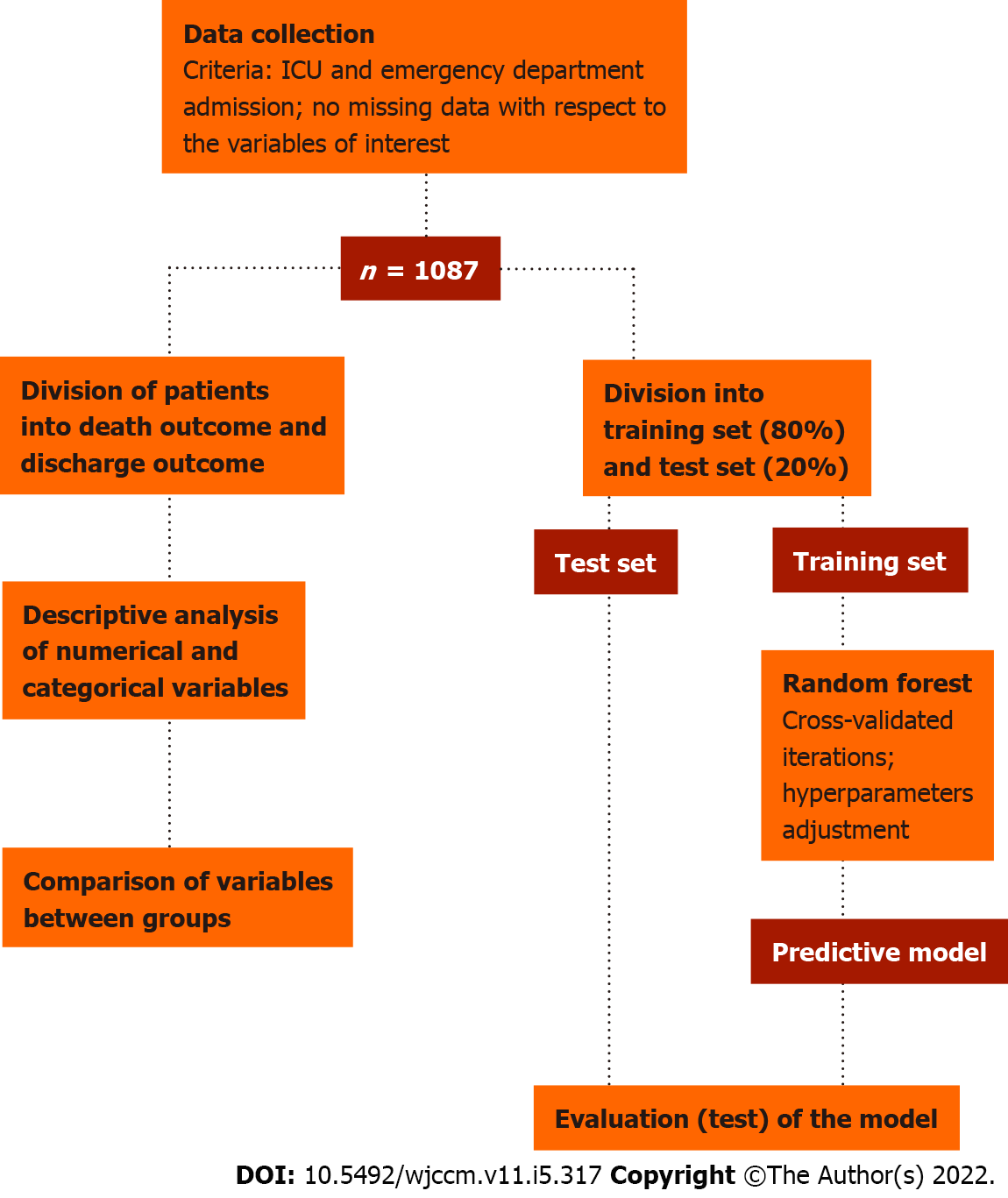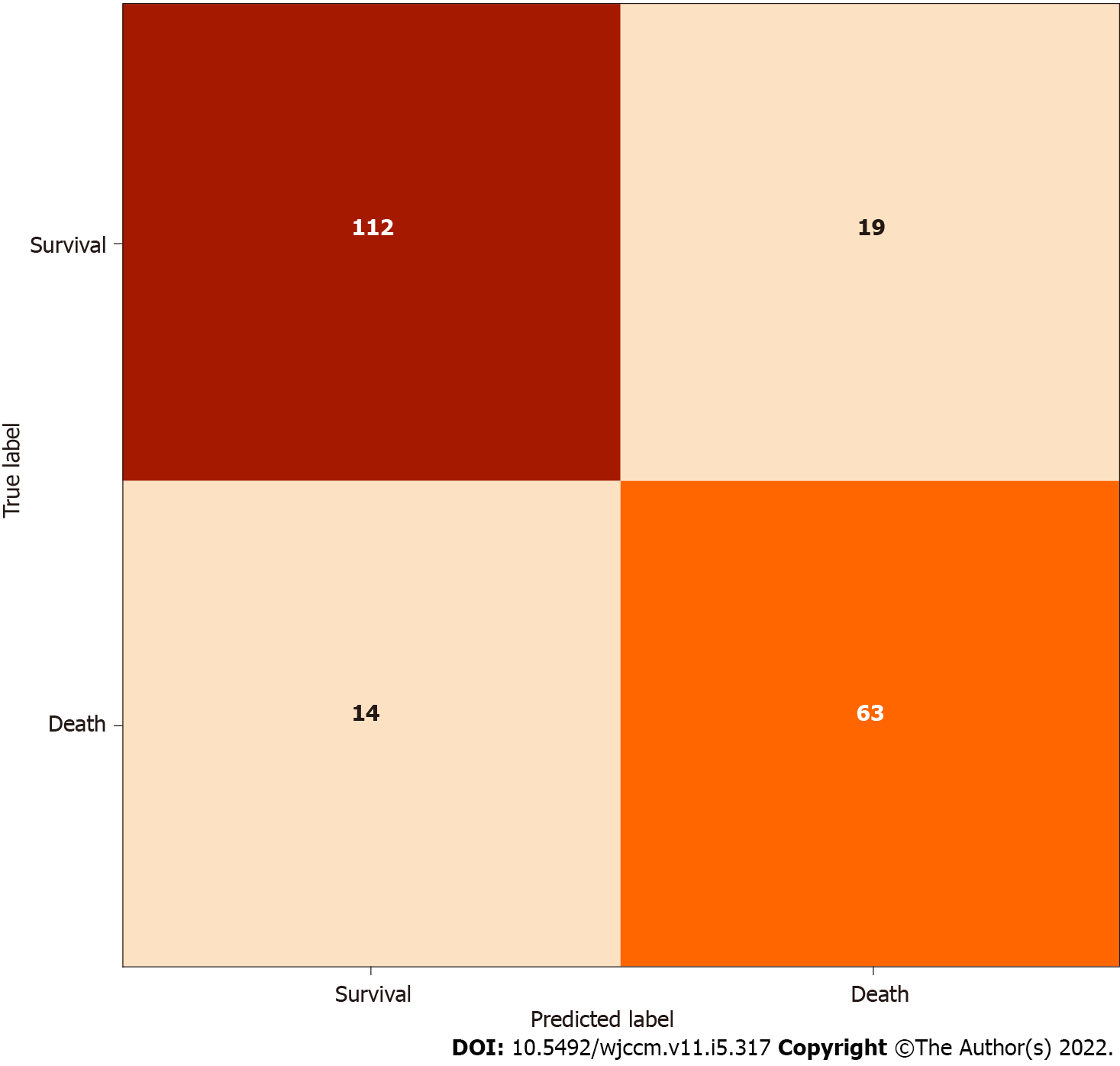Copyright
©The Author(s) 2022.
World J Crit Care Med. Sep 9, 2022; 11(5): 317-329
Published online Sep 9, 2022. doi: 10.5492/wjccm.v11.i5.317
Published online Sep 9, 2022. doi: 10.5492/wjccm.v11.i5.317
Figure 1 Methodological design of the study.
The proposed workflow encompasses selective collection of clinical, laboratorial and outcome data, splitting and pre-processing of the data, iterative training of the classificatory model, and finally evaluation of its performance. ICU: Intensive care unit.
Figure 2 Model confusion matrix.
As illustrated, the model was able to accurately predict occurrence of death outcome for 63 of 77 patients and non-occurrence for 112 of 131 patients, with true positive and true negative rates of 76.8% and 88.9%, respectively.
Figure 3 Model receiver operating characteristic curve.
The graph demonstrates the relationship between true and false positive rates, which led to an area under the curve of 85%. AUC: Area under the curve.
- Citation: Caires Silveira E, Mattos Pretti S, Santos BA, Santos Corrêa CF, Madureira Silva L, Freire de Melo F. Prediction of hospital mortality in intensive care unit patients from clinical and laboratory data: A machine learning approach. World J Crit Care Med 2022; 11(5): 317-329
- URL: https://www.wjgnet.com/2220-3141/full/v11/i5/317.htm
- DOI: https://dx.doi.org/10.5492/wjccm.v11.i5.317











